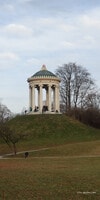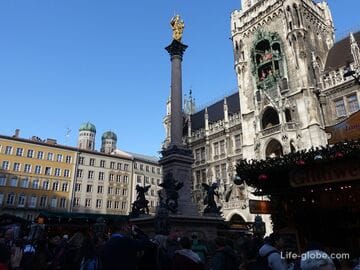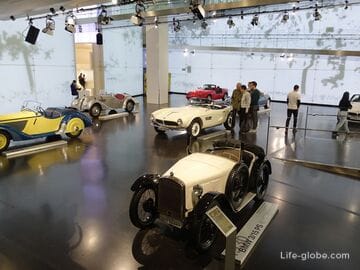The English Garden (German name: Englischer Garten) is a large public park in the center of Munich, which is one of the largest urban parks in the world.
The park has existed for more than 230 years.
The park was created in 1789 by Sir Benjamin Thompson, later Count Rumford (Reichsgraf von Rumford), for Prince Charles Theodore, Elector of Bavaria. Later, Thompson's successors, Reinhard von Werneck and Friedrich Ludwig von Skell, advisors on the project from the beginning, expanded and improved the park.
The Munich English Garden from 1792 became one of the first major continental European parks that anyone could visit.
The park received its name "English Garden" in connection with the use in its design and further creation of the English landscape park style, which originated in England in the early 18th century and spread throughout Europe.
Nowadays, the English Garden of Munich is a popular place for walking, recreation and sports, both among local residents and visitors to the city. In addition, there are several important sights of the city on the territory of the park.
The park covers more than 370 hectares, is located in the center of Munich, on the west bank of the River Isar and stretches from the Prinzregentenstrasse to the northeast of the city. The length of the park is just over 5.5 kilometers.
Conventionally, the English Park can be divided into two sections:
- south, which in a narrower sense refers to the concept of "English Garden" and is part of the Munich landscape protection zone;
- north, which is also known as Hirschau, because it was built on the former Isar meadows to the north of the city. This part of the park was created from 1798 to 1804 as a northern extension of the English Garden.
The border between the northern and southern parts of the park is the four-lane Isarring road.
The southern part of the English Garden in Munich
The southern part of the English Garden is more landscaped and popular.
This part of the park was originally created in 1789-92.
In this part of the park are the most famous buildings: tea house, monopteros, Chinese tower and part of the Berlin wall.
There are also well-groomed green areas and meadows, places for recreation, walking paths and reservoirs: streams, lakes.

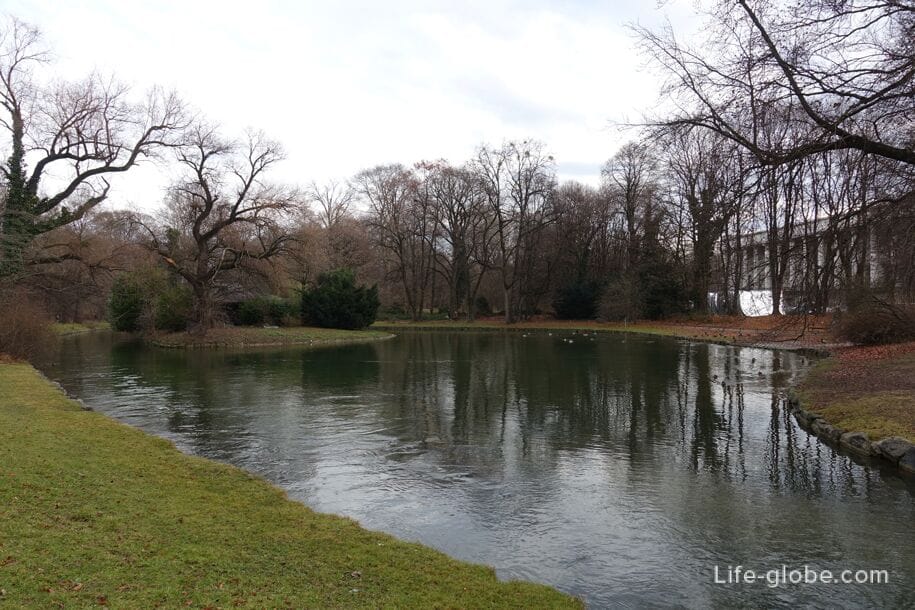


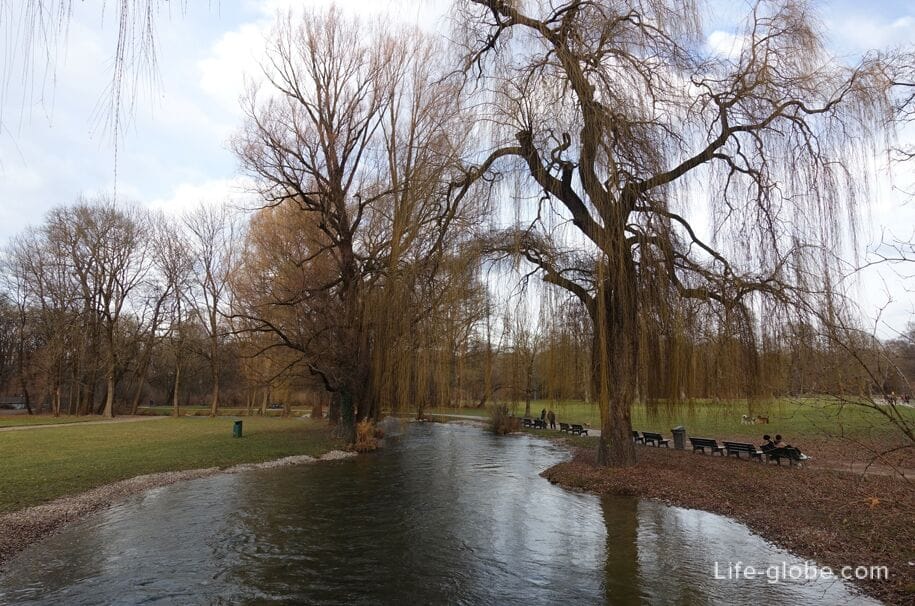
The Eisbach Wave (Eisbach-Welle) - the famous part of the deepest stream in the English park-the Eisbach stream, located at the southern end of the park, near the House of Art (Haus der Kunst), Prinzregentenstrasse street.
This standing wave, about a meter high, attracts experienced surfers almost all year round.
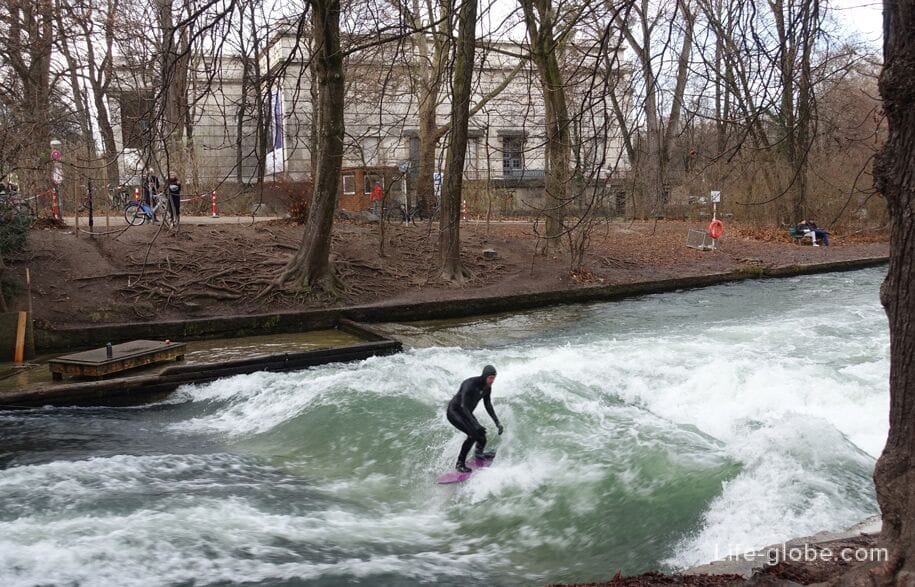
Video "catch the Eisbach wave"
On the Eisbach in the English Garden there is a second wave, located 700 meters downstream of the stream-further north, which is called "Small wave of the Eisbach" (kleine Eisbachwelle).
At this point, the Eisbach is wider, so the water flows more slowly, and the wave is less "demanding", as a result of which it is used by less experienced surfers to develop their skills.
But for very inexperienced surfers on the "small wave" can still be dangerous because of the concrete borders on both sides and sometimes a strong undercurrent.
Wave landmark: E2 Kleine Eisbachwelle / River Surfing. Read more about all the surfing spots in Munich...
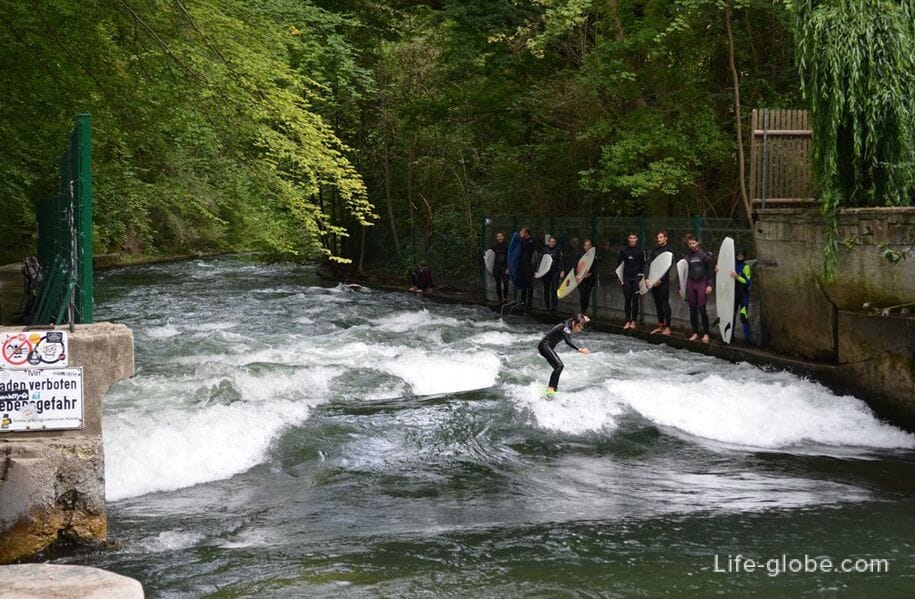
Berlin Wall Memorial (Denkmal Berliner Mauer) - historical monument, which is the original part of the Berlin Wall.
A former member of the Bundestag from the CSU, Johannes Singhammer, purchased a piece of the wall, brought it from Berlin to Munich by truck and handed it over to Bavaria.
A "Memorial to Freedom and Reunification" (Mahnmal für Freiheit und Wiedervereinigung) was created from part of the wall. In 1996, the memorial was opened on the anniversary of the reunification, and since then, in the English Garden, you can touch a piece of the history of the whole of Germany - in the truest sense of the word!
The monument is located at the southwestern edge of the English Garden, near the US Consulate General on Koniginstrasse 5 (Königinstraße).
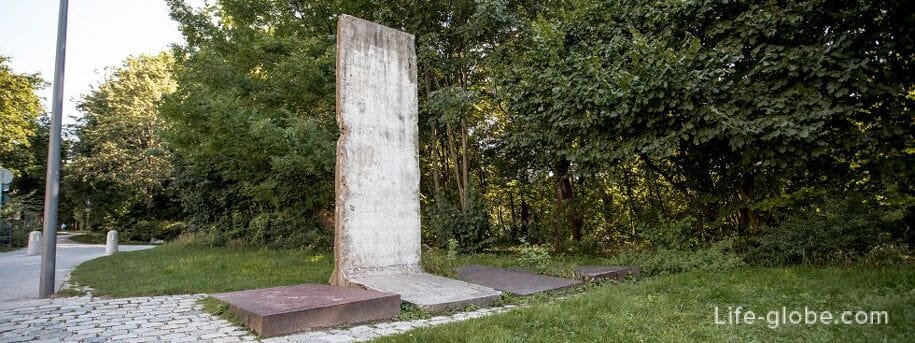
Japanese Tea House (Japanisches Teehaus) it was built in 1972 in honor of the celebration of the Summer Olympics, held in Munich.
The tea house and small garden are located near the southern end of the park, on an artificial island in Lake Schwabingerbach, which was created only a few years earlier (1969).
Japanese fans regularly meet there for a traditional tea ceremony. On the third Sunday of July, the "Festival of Japan" takes place around the tea house.
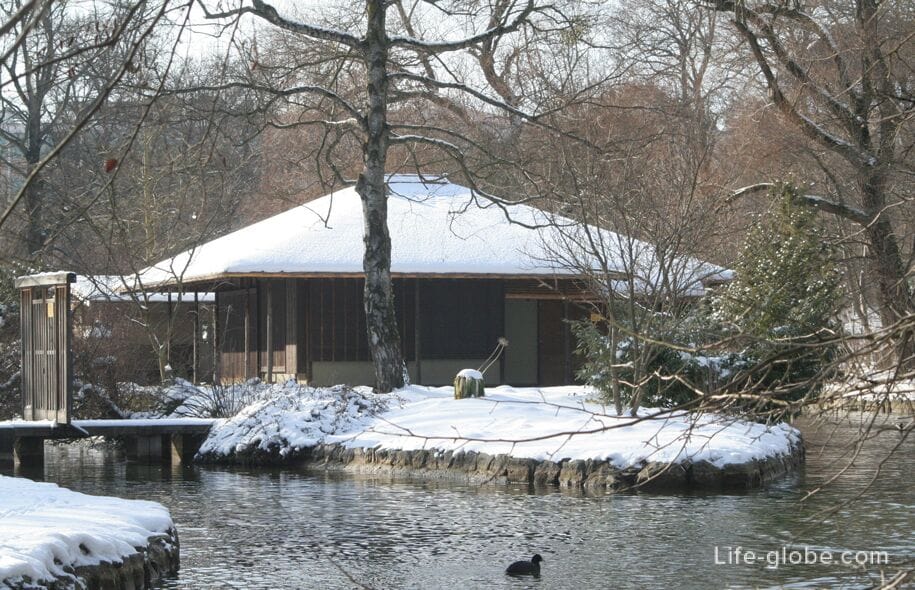
Monopter (Monopteros) - Greek-style rotunda, located on a hill English Garden.
When the nearby wooden temple of Apollo was destroyed by time, the idea of creating a new temple came up. On the instructions of King Ludwig I, in 1836, the architect Leo von Klenze completed the construction of a new round temple in the Greek style.
The temple is located on an artificial hill, which was formed from construction debris obtained as a result of work carried out on the Munich residence. The remains of building materials were covered with earth. So in the English Garden, a 15-meter hill was formed.
A Monopter was erected on the hill. The ten Ionic columns of the temple support a shallow copper-clad dome. A special feature of the Monopter is the use of polychrome stone painting, which at that time was interested in Leo von Klenze.
Today, the monopter is a free-for-all viewing platform that offers views of the English Garden and the Munich skyline.
On snowy winter days, the hillsides are used for sledding.
Photo of the monopter
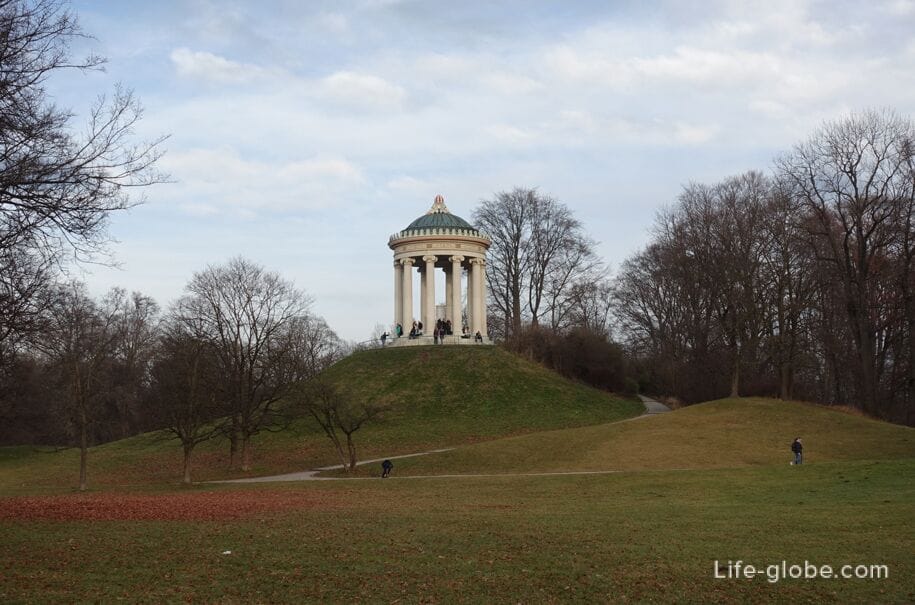
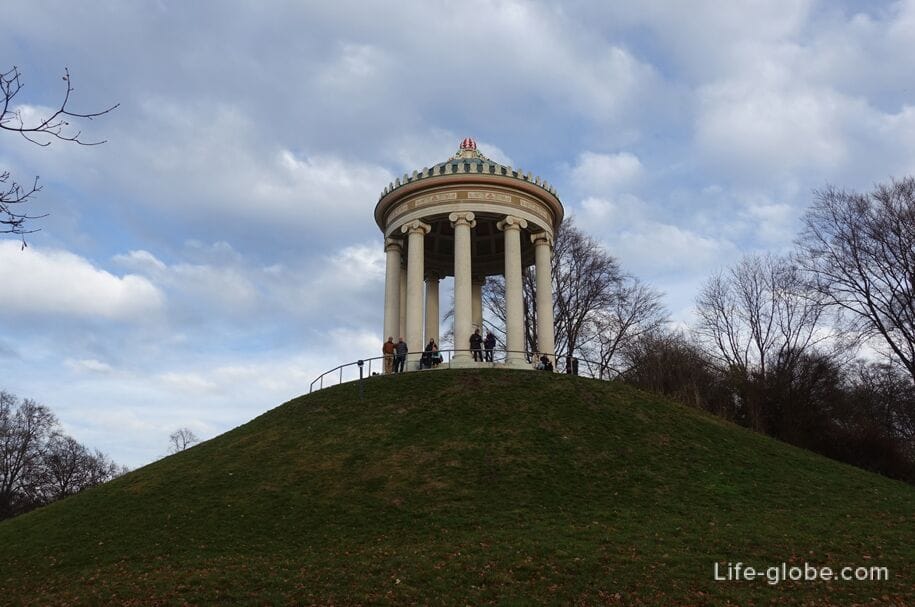
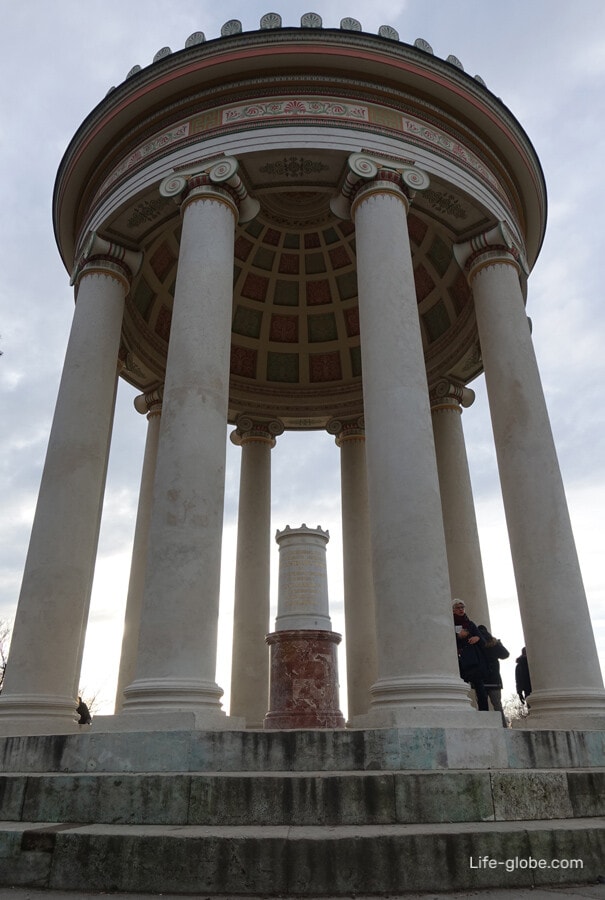
Views from the rotunda
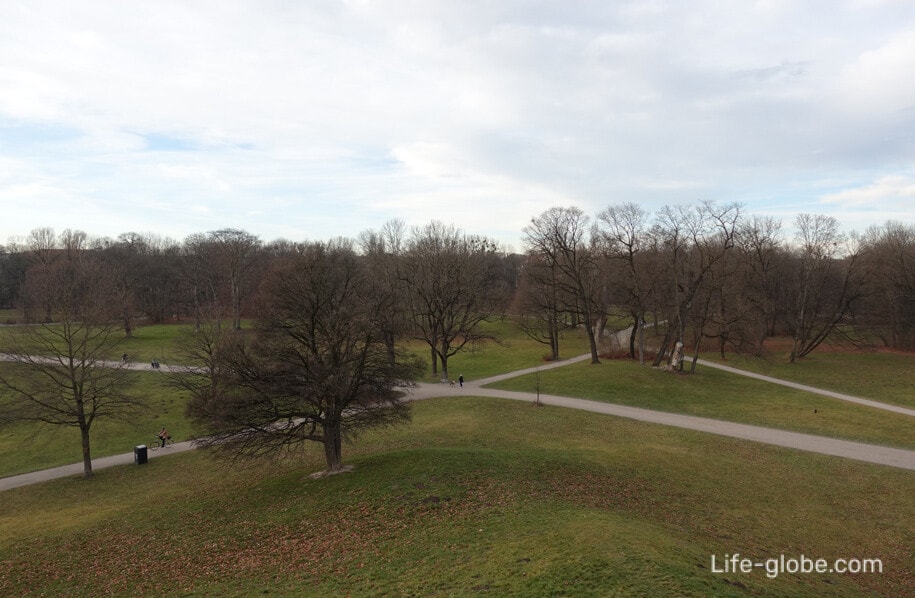
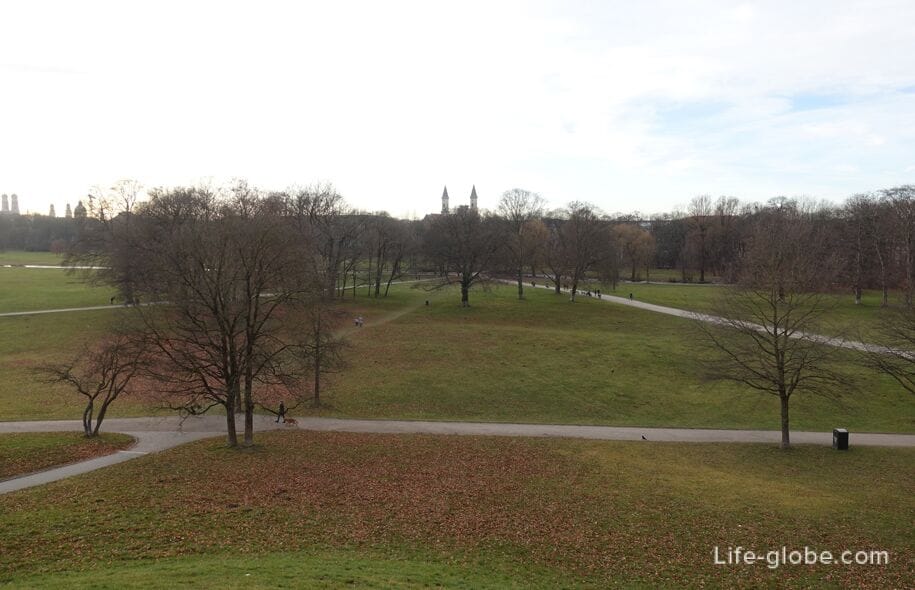
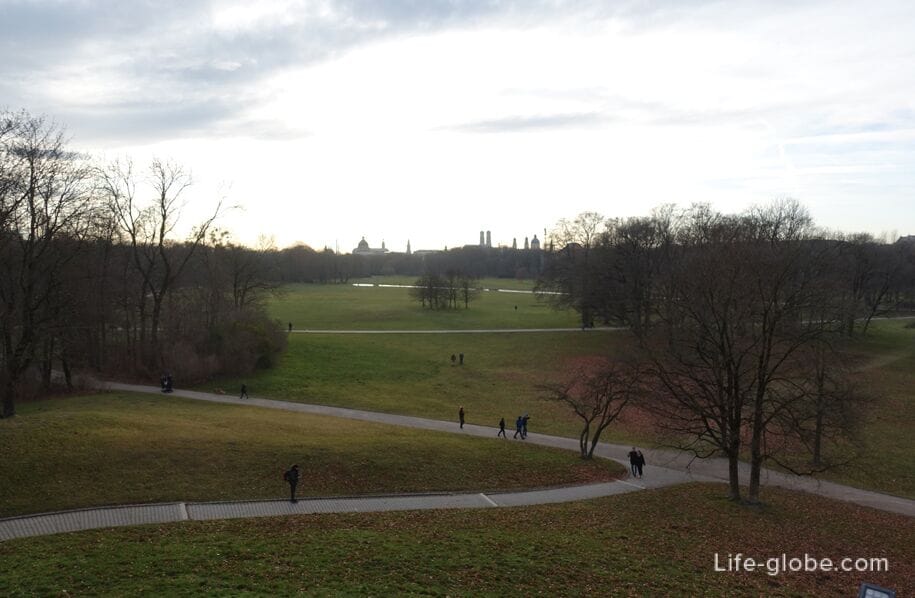
Stone bench (Klenze's Steinerne Bank), built by Leo von Klenze in 1838 on the site of the former temple of Apollo and based on the foundation of the former temple.
On the bench there is an inscription that reads: "Here, where you wander, there used to be only forests and swamps" (Hier wo Ihr wallet, da war sonst Wald nur und Sumpf).
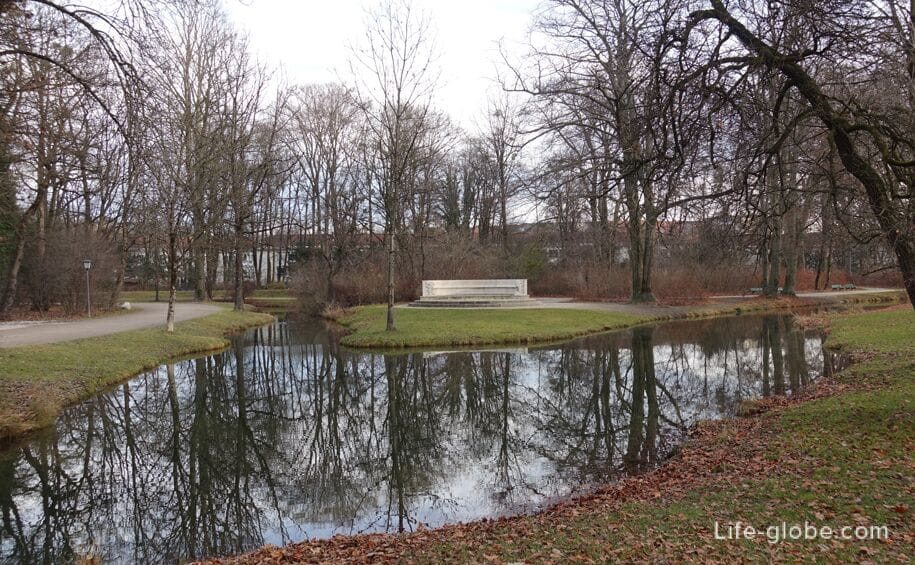
Chinese Tower (Chinesischer Turm) - a wooden structure in the imperial Chinese style, rising to 25 meters and dating back to the design of 1789.
During the Second World War, the tower burned down, but was later restored to match the original.
The Munich Chinese Tower consists of five floors: the ground roof has a diameter of 19 meters, and the top floor is 6 meters.
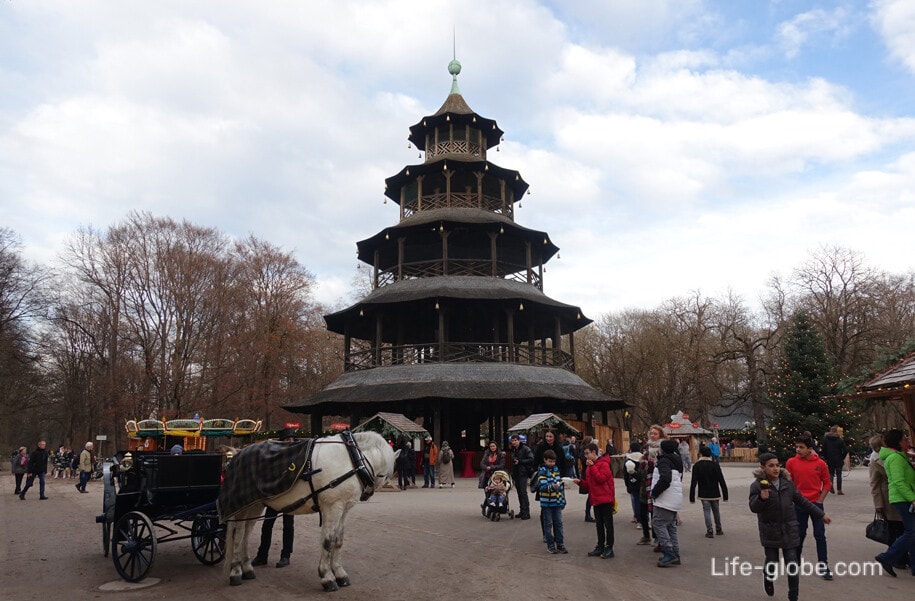
Next to the tower is a Biedermeier-style children's carousel with strollers, sleds and 20 carved wooden animals.
On the site near the Chinese tower is one of the largest beer gardens in the city Restaurant am Chinesischen Turm, with about 7,000 seats.
On Christmas and New Year's Eve, there is a Christmas Market (Weihnachtsmarkt) on the territory near the Chinese tower, which is filled with tents and kiosks selling drinks, including warming mulled wine, snacks, sweets, souvenirs, etc. There are tables in the open air, you can play sports, ride on a carousel or in a horse-drawn cart. Read more about the Chinese Tower...
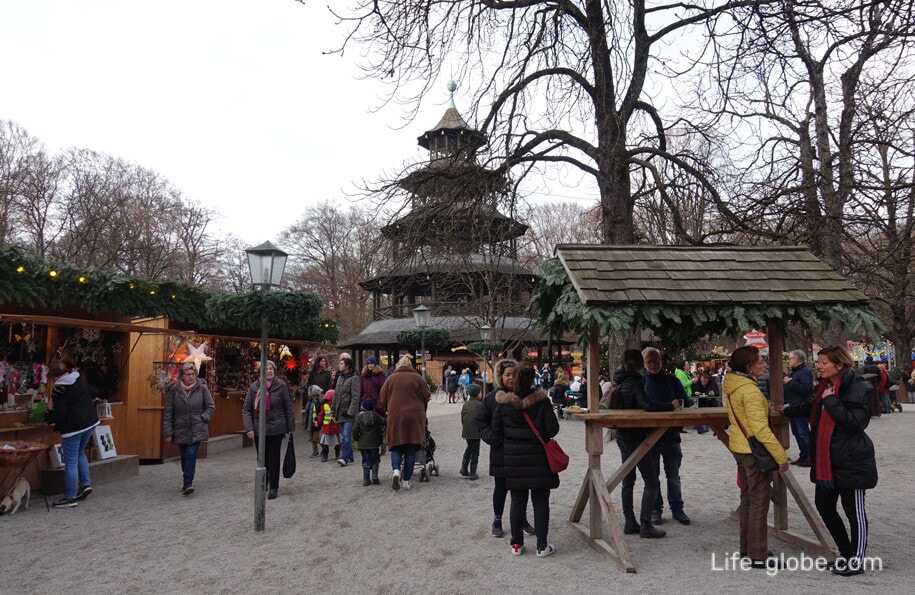
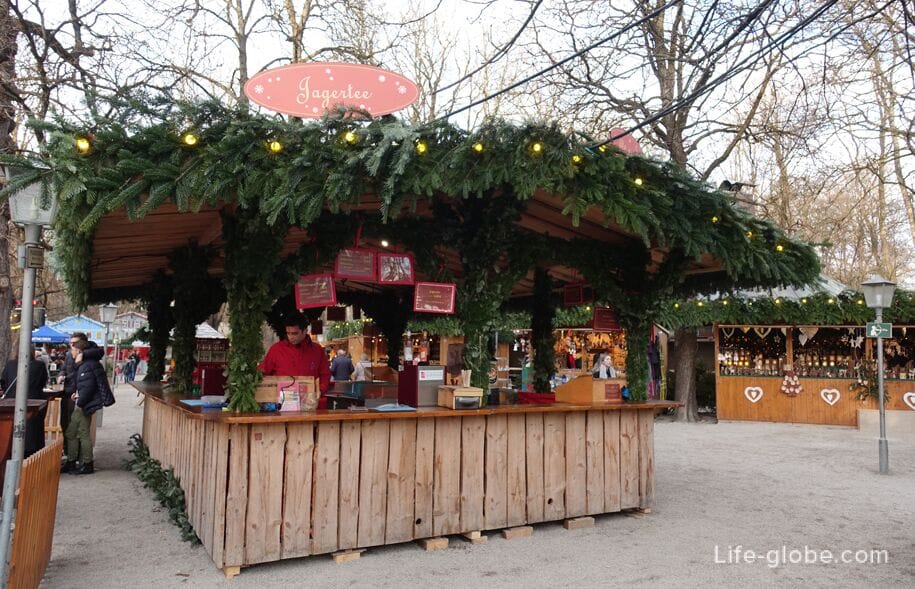

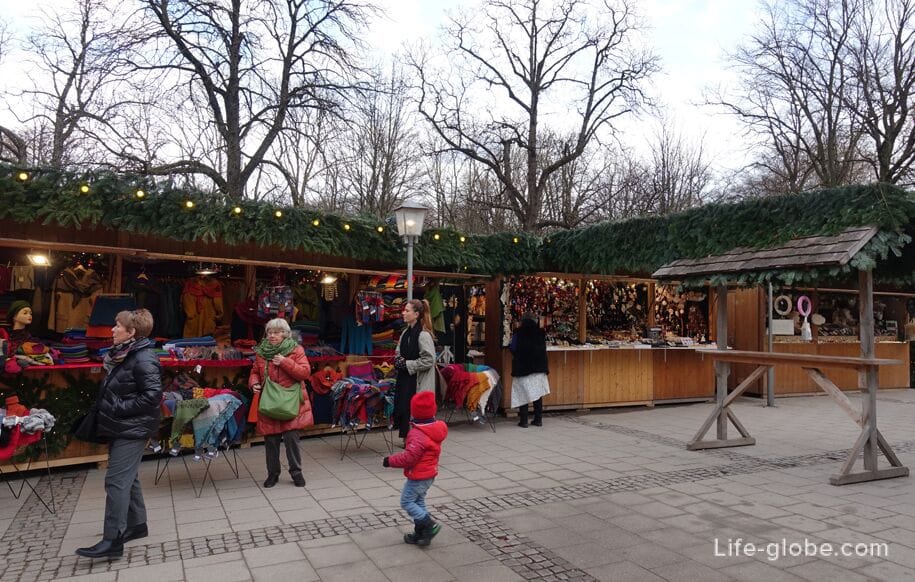
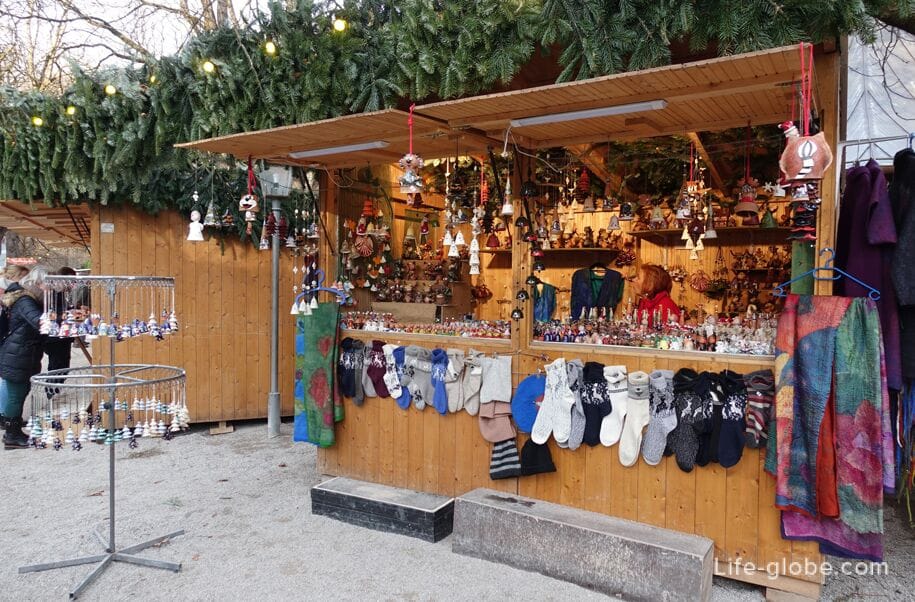
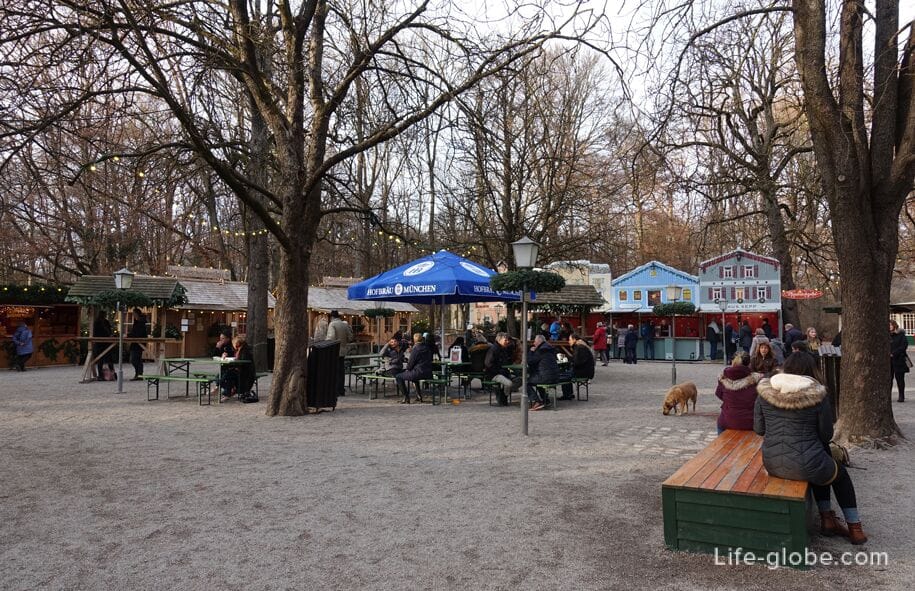
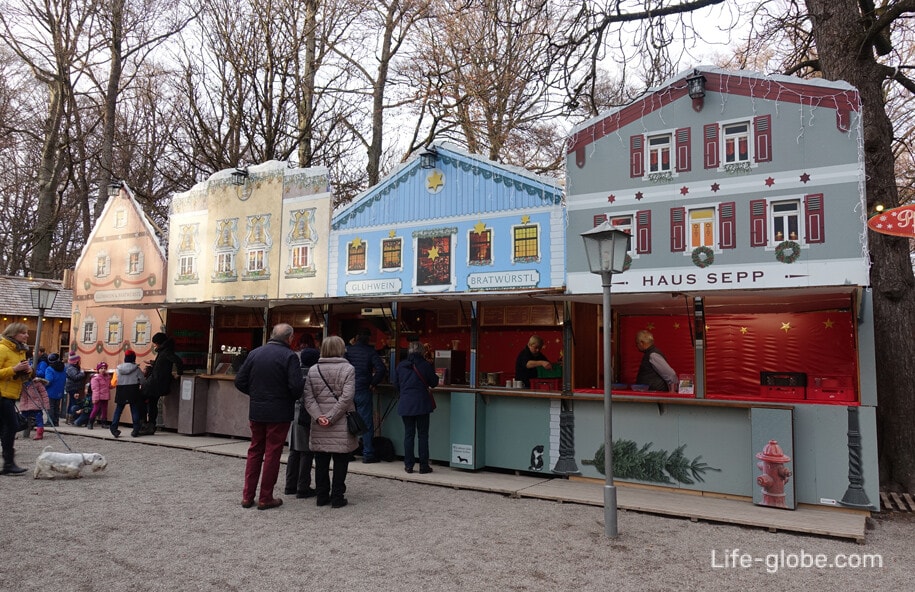
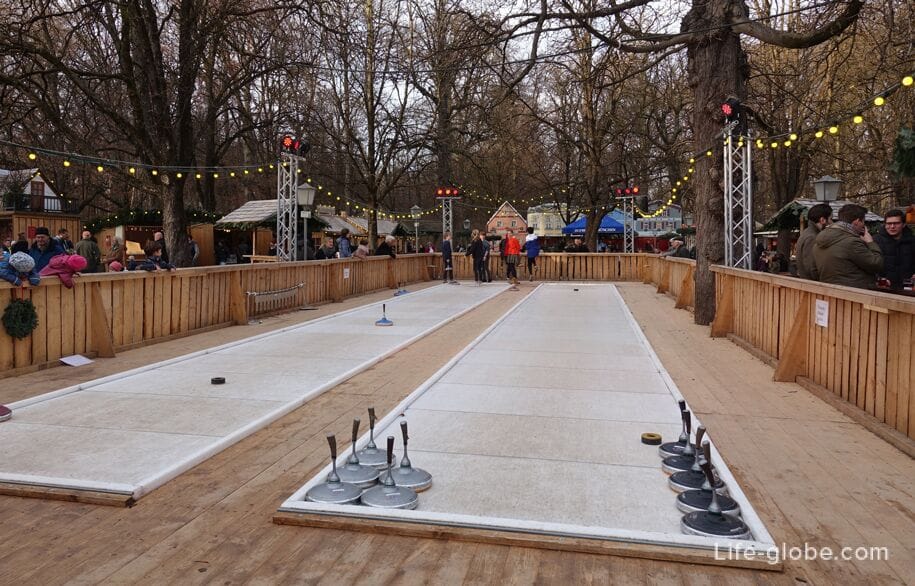
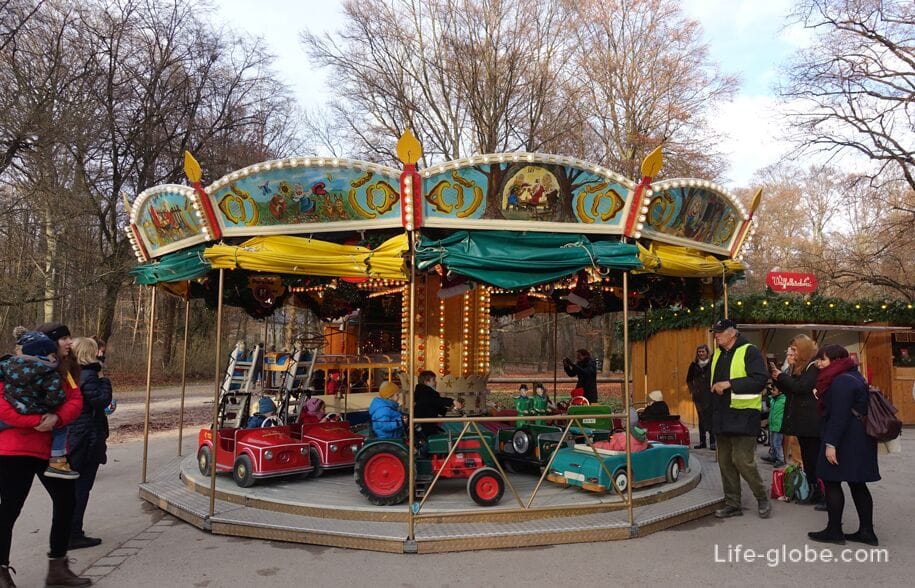
Rumfoordhaus - the building in the classical style, built in 1791 as an officer's casino and which is now used as a youth center.
At the time of construction, the building was known as the" Great Hall " (Großer Saal) or "Military Hall" (Militärsaal); but was later renamed in honor of the park's founder, Benjamin Thomson, Earl of Rumford.
The building is 30 meters long and 10 meters wide. On both sides of the building there is a portico with six Ionic columns. The large hall of the building, decorated with many mirrors, which gave the hall the name "Mirror Room" (Spiegelsaal), can accommodate 150 people.
The building is located just northwest of the Chinese tower.

Near the south-eastern edge of the English Garden, not far from the Chinese Tower, the Hilton Munich Park Hotel offers a club-restaurant, lounge, bar, parking, gym and a modern spa with an indoor pool.
The air-conditioned rooms here will provide you with a flat-screen TV and a minibar. The balconies offer panoramic views.
Breakfast can be included in the room rate. Link to the hotel
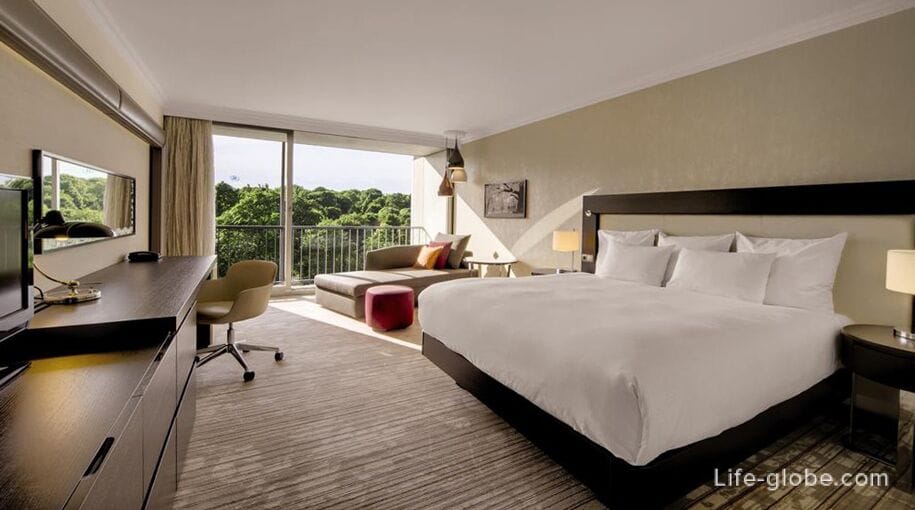
In addition, in the southern part of the park, there is also the SEEHOUSE restaurant with the Biergarten beer garden with open-air tables by the Kleinhesseloher Lake.
The northern part of the English Garden in Munich
The northern part of the English Garden is Hirschau, more quiet and peaceful than the southern part. Here the park is more natural and wild.
It is this part of the park that is chosen for hiking, running and cycling.
There are also streams and several small ponds in the northern part of the park. In some of the glades of Hirschau, sheep are grazed in the summer, while others are used for mowing hay.
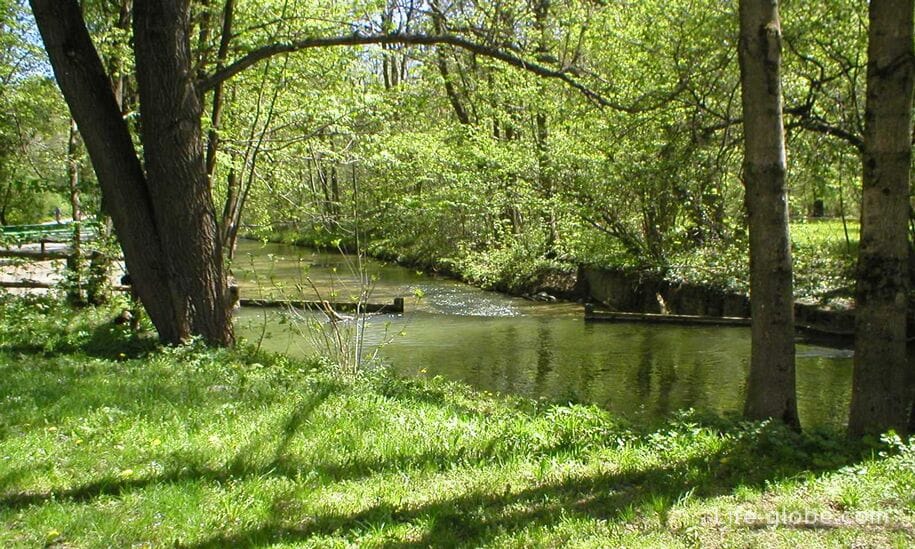
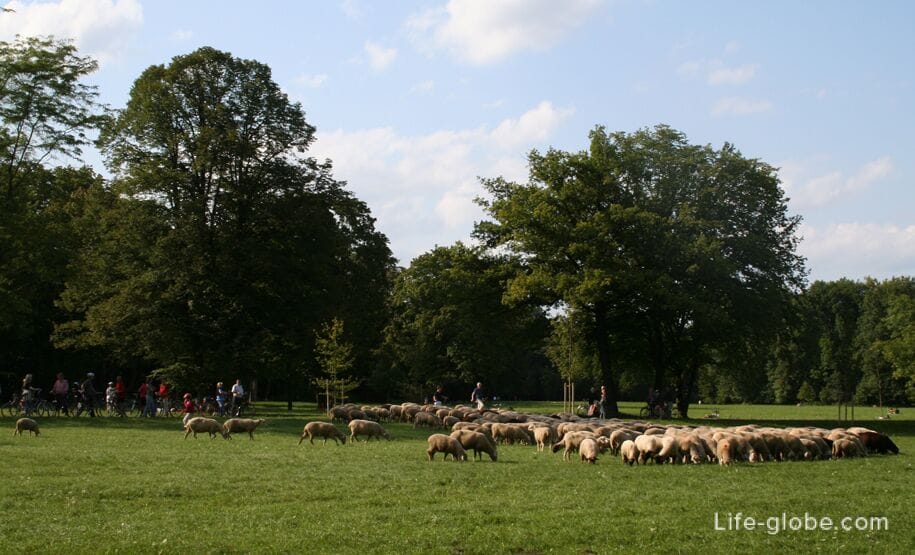
In the northern part of the park are:
- places for relaxing holidays and sports activities;
- tennis court;
- The Tivoli Power Station (Tivoli-Kraftwerk) is a historic hydroelectric power station built in 1897 and originally used to power the Maffei machine-building plant.
In 1948, the station was stopped and used for exhibitions and other events. After 1985, it was upgraded - two of the three turbines were replaced with modern ones. The remaining old turbine can be put into operation for demonstration purposes;
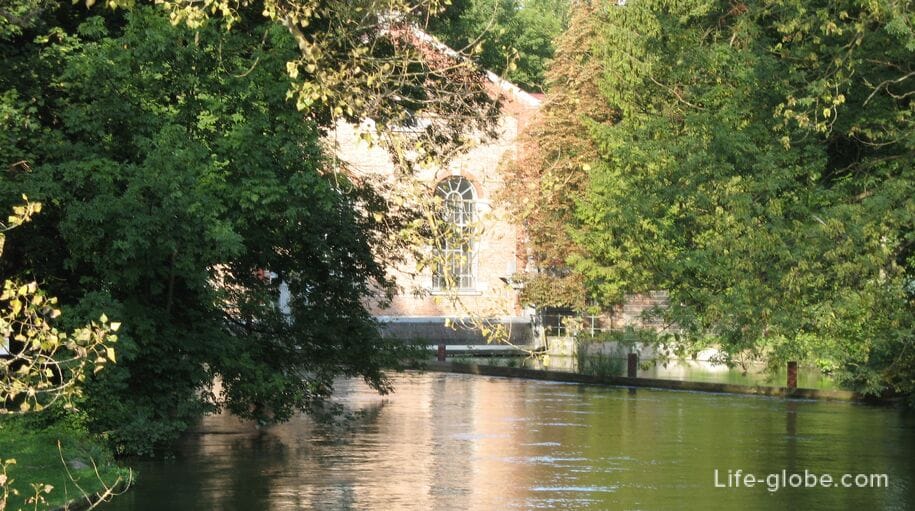
- a small amphitheater, built in 1985 to replace and by analogy with the former and now defunct amphitheater, which was located on another site and existed in the period from 1793 to 1807.
The newly erected amphitheatre has been dubbed the "New Amphitheatre" and is used for summer outdoor performances;
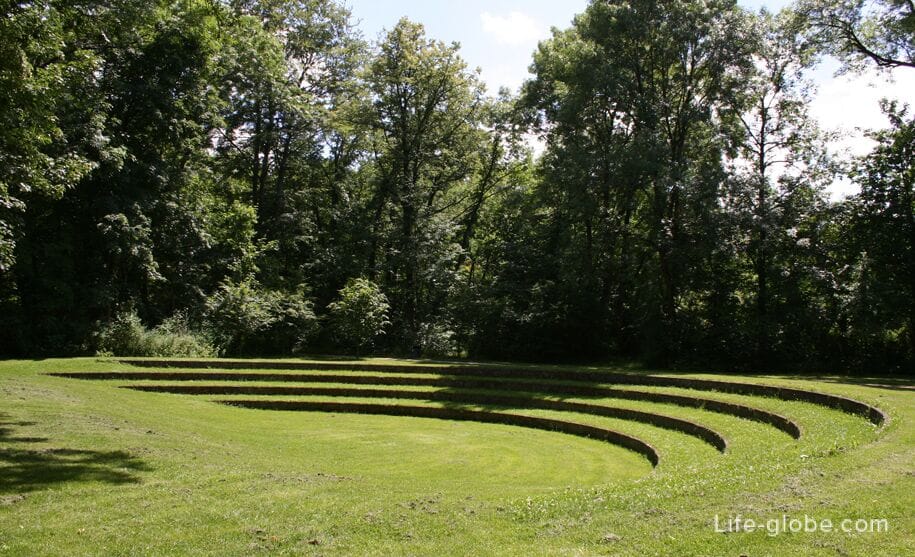
- St. Emmeram Bridge (St. Emmeram Brücke) over the River Isar, connecting the northern part of the English Park with a small green area with a playground and the St. Emmeram district of Munich, located on the right bank of the River Isar.
The bridge with a metal canopy has a length of about 100 meters and is intended only for pedestrians and cyclists.
The bridge, on the site of the present one, existed before the foundation of Munich, but was destroyed in the Middle Ages. In 1978, a wooden bridge was created, which burned down in 2002. The bridge was later rebuilt and reopened in December 2004;
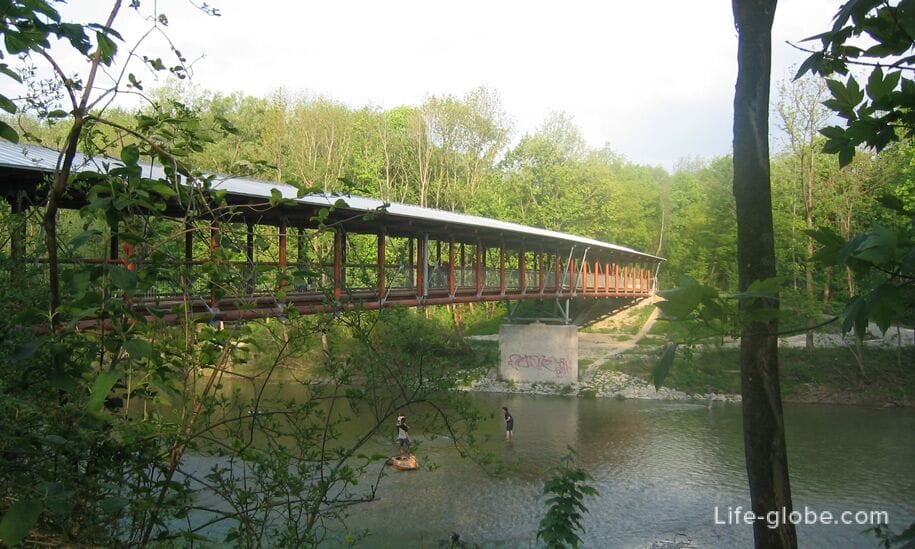
- The Hirschau Beer Garden, with a capacity of approximately 1,800 guests, located on the southern border of the northern part of the park and the Aumeister beer garden restaurant, located on the northern edge of the English Garden.




